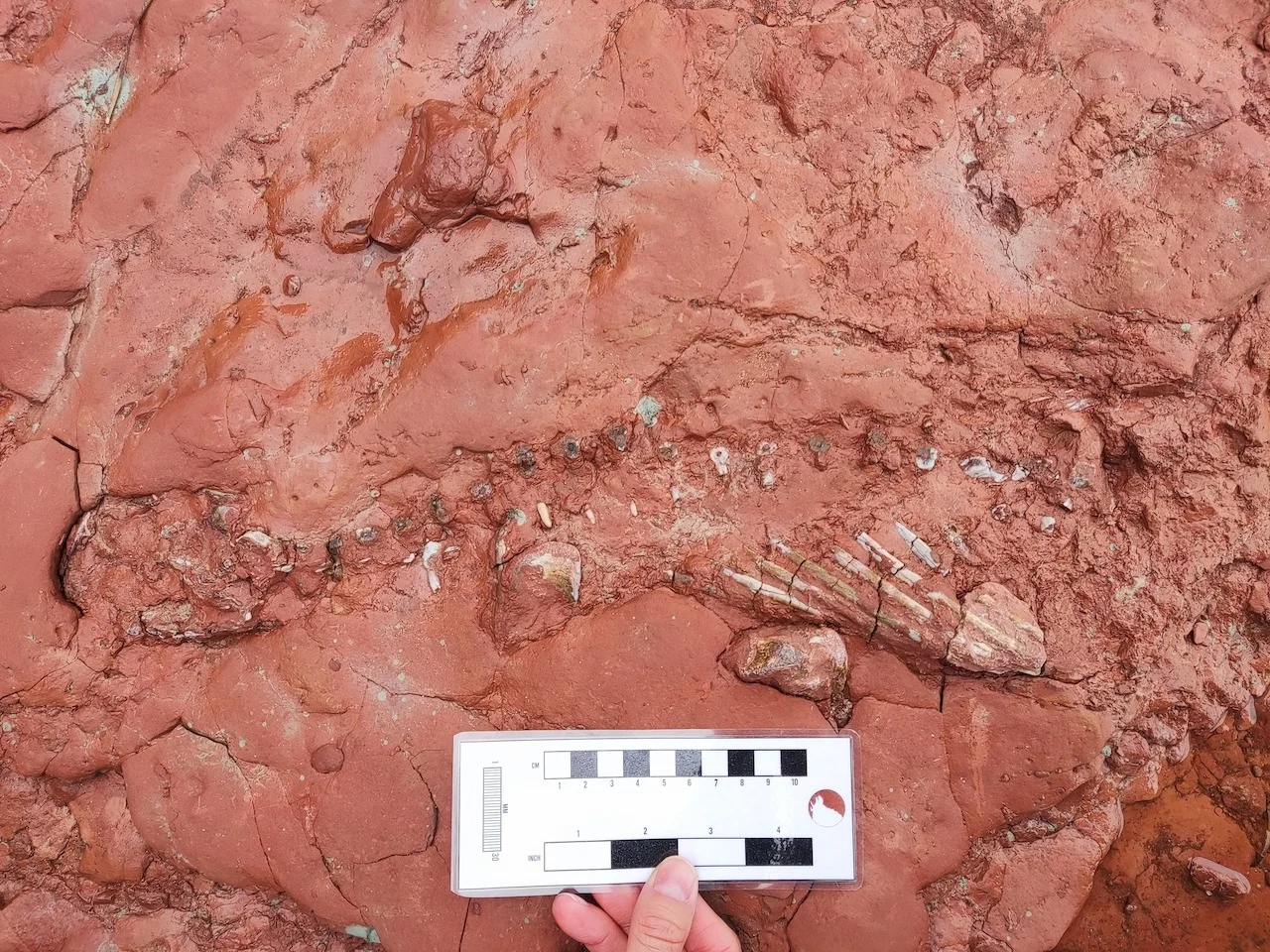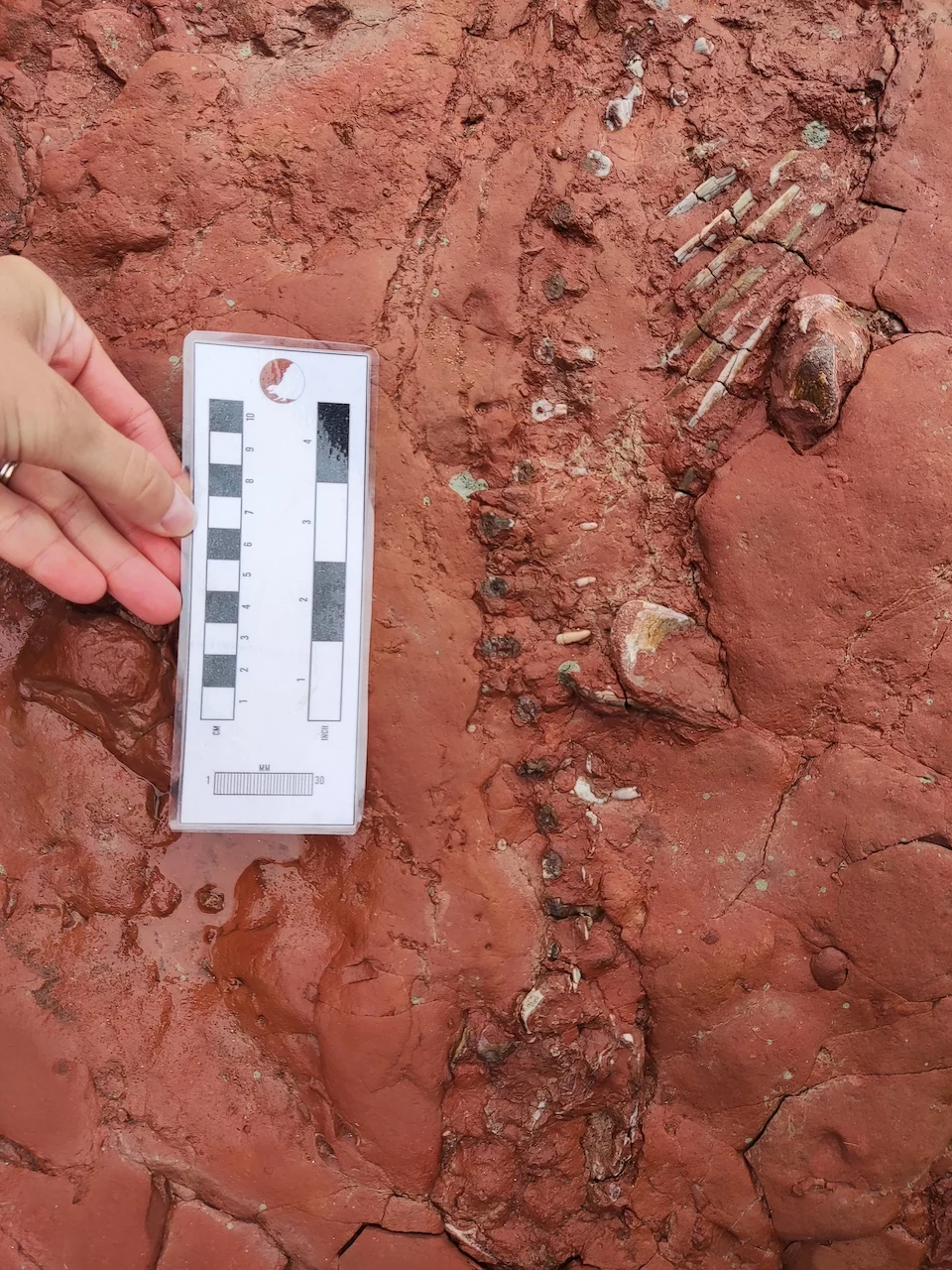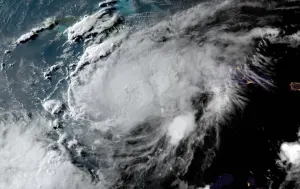
School teacher stumbles upon fossil that may be 300 million years old
A P.E.I. school teacher has made the discovery of a lifetime after stumbling upon a fossil that could be 300 million years old.
Lisa Cormier was taking a stroll in Cape Egmont Monday afternoon when she spotted something unusual partially buried on the shore.
MUST READ: Waterproof flashlights for emergencies and everyday use
"I saw something that I thought was a root," she said. "And when I looked closer at it, I realized that there were ribs. And then I saw the spine, and the skull."
Cormier took pictures of her find to share them with her family.

(Laura MacNeil/Submitted)
Her mother-in-law sent them to Laura McNeill of Prehistoric Island Tours. McNeill immediately contacted Cormier, as well as other specialists.
John Calder, a geologist and paleontologist, was one of them. He said the fossil appears to be from near the end of the Carboniferous period and into the Permian period. That's about 300 million years ago.
Calder, who has written a book on the geological heritage of P.E.I., said a find like this is "extremely rare."

(John Calder, Matt Stimson and Lisa Cormier/Submitted)
"A fossil like this comes up every 50 years or 100 years," he said. "I mean there's no real frequency, but it's rare. And this could be a one-of-a-kind fossil in the tree of life … of evolution of amphibians, to reptiles, to mammals to us."
The fossil hasn't been identified, but Calder said it's likely a reptile or at least a very close relative.
"This is early in the evolution of reptiles from amphibians, and they're branching out," he said. "And so it's going to be a real puzzle. It'll take probably a good year to figure out the identity of this thing."

(John Calder, Matt Stimson and Lisa Cormier/Submitted)
He said very few specimens have been discovered from that period and that it could even be a previously unknown species.
An excavation team that included Matt Stimson, Patrick Brunet and Linda Berko were able to dig it out after a few days of work.
On Saturday, Parks Canada staff carefully moved the fossil from its discovery site to a Greenwich facility that's been acting as a paleontological repository of sorts.

(Laura MacNeil/Submitted)
Calder said it's not going to stay there for too long as it needs to be taken to a paleontology lab to be seen by experts.
"They'll probably use a CT scan," he said.
On the lookout
He said fossil finds like this one in P.E.I. have become more frequent in the last couple of years. He advised Islanders to keep their eyes peeled.
"There are a lot more everyday people out there walking the beaches than there are paleontologists and most of these important discoveries are not made by scientists," he said.

(Laura MacNeil/Submitted)
Cormier said the find is a once-in-a-lifetime opportunity to leave some sort of legacy in the history of science.
"To think that I found something that might be 300 million years old, it's incredible," she said.
"I think it's gonna be a one time [thing], but I'll continue my walks and I'm going to continue to look for sea glass and maybe I'll find something else."
WATCH: Dinosaur fossil discovered atop nest with eggs
Thumbnail courtesy of Laura MacNeil/Submitted.
The story, written by Arturo Chang, was originally published for CBC News. It contains files from Tony Davis.









